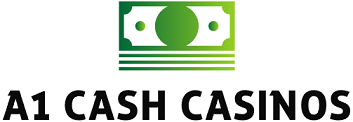In the current swiftly changing commercial environment, we discover ourselves positioned between conventional reward systems and creative engagement approaches.
For decades, bonuses have served as the cornerstone of employee reward systems, driving performance and engagement. However, we are now witnessing a shift towards more dynamic and potentially lucrative incentives: jackpots.
As organizations strive to keep pace with changing expectations and diverse workforce needs, the allure of jackpots is becoming increasingly apparent. These high-stakes rewards promise not just financial gain, but also a thrilling sense of participation in something grand.
We must consider whether this trend signifies a fundamental change in how we motivate and recognize talent. Are jackpots merely a fleeting trend, or are they poised to overshadow traditional bonuses, reshaping the landscape of employee incentives?
Together, we explore the implications of this shift, examining its potential impact on both organizational culture and employee satisfaction.
Evolution of Incentive Strategies
Over the years, we’ve observed how incentive strategies have shifted from traditional bonuses to more engaging jackpot-style rewards. This evolution is fascinating because it taps into psychological drivers that enhance employee engagement.
By incorporating elements of surprise and excitement, we create an environment where everyone feels more connected and motivated. We all want to feel like we’re part of something bigger, and these new strategies help cultivate a sense of belonging within the team.
Jackpot-style rewards leverage the thrill of unpredictability, drawing us in with the promise of potential gains. This approach doesn’t just offer financial incentives but also fosters a deeper emotional connection to our work.
When we participate in these dynamic programs, we’re not just working for a paycheck; we’re part of an exciting journey with shared goals and experiences.
Incentive strategies today are more than just rewards; they’re a tool for building community and encouraging a culture where everyone’s contributions are valued and celebrated.
Role of Bonuses in Motivation
Bonuses as a Motivational Tool
Bonuses have long been a cornerstone in motivating employees, offering tangible rewards that recognize and appreciate their hard work. As part of our incentive strategies, they play a crucial role in boosting employee engagement.
Impact of Receiving a Bonus
When we receive a bonus, it’s more than just extra cash; it’s a validation of our contributions and a sign that we’re valued members of the team. This recognition fosters a sense of belonging, which is vital for maintaining morale and productivity.
Psychological Drivers of Motivation
Psychological drivers like acknowledgment and appreciation are essential to motivation. They fuel our desire to excel and reinforce our commitment to the organization.
- Bonuses tap into these drivers, creating a positive feedback loop that encourages us to continue performing at our best.
- By aligning our personal goals with organizational objectives, bonuses ensure that everyone feels connected to the larger mission.
Community and Organizational Success
As a community, we thrive when each member feels seen and rewarded, making bonuses an indispensable part of our work culture.
Emergence of Jackpots in Rewards
Jackpots as Exciting Alternatives to Traditional Bonuses
Jackpots are emerging as an exciting alternative to traditional bonuses, offering the potential for larger, more thrilling rewards. They tap into our psychological drivers by providing a sense of excitement and anticipation. Unlike standard bonuses, which can sometimes feel predictable, jackpots introduce an element of surprise that can invigorate our work environment.
Fostering Connection and Camaraderie
We’re finding that these jackpot-style rewards can foster a deeper connection among team members. By creating shared experiences and collective goals, they enhance our sense of belonging. When everyone has a shot at a big win, it encourages camaraderie and motivates us to work together.
Aligning with Dynamic Reward Systems
Moreover, jackpots align with our desire for more dynamic and engaging reward systems. They cater to our intrinsic motivations by making work feel like a game, where the prize is not just financial but also emotional satisfaction.
Conclusion
As we continue to refine our incentive strategies, integrating jackpots could be a game-changer for fostering employee engagement.
Impact on Employee Engagement
Jackpots can significantly boost engagement at work by transforming everyday tasks into more exciting challenges. When jackpots are part of incentive strategies, motivation can skyrocket due to the thrilling rewards they offer.
This shift from traditional bonuses to jackpots taps into the desire for belonging and recognition within teams. Employees work not just for a paycheck but as part of something bigger, where contributions are recognized dynamically.
Employee engagement is crucial in creating a cohesive and motivated workforce. With jackpots, employees experience:
- A fresh sense of anticipation
- Shared excitement among colleagues
- Increased drive to collaborate and innovate
These incentive strategies foster both individual motivation and collective enthusiasm, strengthening team bonds.
Incorporating jackpots allows companies to leverage psychological drivers to enhance the work environment. This creates a culture where employees are motivated, engaged, and eager to contribute, knowing their efforts matter.
Psychological Drivers of Rewards
Understanding the psychological drivers of rewards helps us craft effective incentive programs that tap into intrinsic motivations.
We know that when we feel valued and appreciated, our engagement at work naturally increases. This sense of belonging is a powerful psychological driver, leading us to invest more in our roles. By developing incentive strategies that align with these intrinsic motivations, we create an environment where employees are motivated not just by external rewards, but also by the satisfaction of being part of something bigger.
Incentive strategies that focus on psychological drivers prioritize employee engagement. They recognize that fostering a sense of community and shared purpose can lead to more sustained motivation.
We’ve observed that:
- Rewards tailored to our personal and professional values amplify our commitment and drive.
- When we use psychological insights to shape our incentive programs, we tap into the emotional and social dimensions of work.
This ensures that our strategies resonate deeply with everyone involved, enhancing both performance and loyalty.
Jackpots vs. Bonuses: A Comparison
When comparing jackpots to bonuses, each has unique impacts on motivation and performance.
Jackpots:
- Create a sense of excitement and anticipation.
- Tap into psychological drivers of risk and reward.
- Motivate individuals to go above and beyond.
- Boost employee engagement.
- Foster a collective energy and camaraderie within the team.
Bonuses:
- Offer a more predictable form of recognition.
- Provide a stable and consistent reward.
- Align performance with tangible outcomes.
- Reinforce trust and dependability in workplace relationships.
- Fulfill the need for security and acknowledgment.
- Encourage sustained effort over time.
In our community, the choice between jackpots and bonuses reflects our values and organizational culture. By understanding the psychological drivers behind these incentives, we can tailor our approach to enhance employee engagement and drive performance, ensuring everyone feels valued and part of something bigger.
Adapting Incentive Structures
To effectively adapt our incentive structures, we must evaluate how jackpots and bonuses align with our evolving organizational goals and employee needs.
Incentive strategies are not just about rewards; they shape the culture and community within our workplace. People crave belonging, and our challenge is to create a sense of connection through our incentives.
Jackpots:
- Excite with their allure of significant rewards.
- Tap into psychological drivers like thrill and anticipation.
Bonuses:
- Offer predictability and recognition.
- Foster steady employee engagement.
We should ask ourselves: what truly motivates our team?
By soliciting feedback and understanding our employees’ perspectives, we can tailor our incentive strategies to better meet their expectations. It’s essential to strike a balance:
- Some might thrive on the excitement of jackpots.
- Others appreciate the consistency of bonuses.
Let’s ensure our approach promotes inclusivity and resonates with everyone. Together, we can build a thriving environment that values each member’s contribution.
Future Trends in Reward Systems
As we look ahead, let’s explore how emerging reward systems will redefine how we recognize and motivate our team. We’re witnessing a shift from traditional bonuses to more dynamic incentive strategies that align with our values and foster employee engagement.
By tailoring rewards to meet individual psychological drivers, we can create a sense of belonging and fulfillment within our team.
In the future, we’ll likely see more personalized approaches, where rewards are not just monetary but experiential, catering to employees’ unique preferences and passions. These strategies will not only motivate but also nurture loyalty and commitment.
To implement these changes effectively, we’ll need to embrace technology to:
- Track and analyze engagement patterns
- Ensure our reward systems are both effective and inclusive
As we navigate these changes, let’s prioritize open communication and collaboration, ensuring every team member feels valued and heard.
Together, we’ll craft a culture where our reward systems reflect our shared goals and drive us toward success.
How do companies determine the size of a jackpot compared to traditional bonuses?
When determining the size of a jackpot versus traditional bonuses, companies analyze several factors:
- Player Engagement
- Market Trends
- Competition
By staying attuned to customer preferences and industry standards, we ensure that our jackpot offerings are enticing and competitive.
Through research and data analysis, we tailor our jackpot sizes to maximize:
- Player excitement
- Player satisfaction
This approach allows us to remain relevant and appealing in the dynamic world of entertainment.
What industries are most likely to adopt jackpot-style incentives over bonuses?
In our experience, industries that thrive on competition and excitement, such as tech and gaming, are more likely to embrace jackpot-style incentives over traditional bonuses.
These sectors often value:
- Innovation
- Risk-taking
Jackpots become an enticing way to motivate employees by tapping into the allure of big wins.
Companies in these fields can use jackpots to:
- Engage their teams
- Inspire their teams to push boundaries
- Achieve outstanding results
How do cultural differences influence the preference for jackpots or bonuses as incentives?
Cultural differences significantly influence preferences for jackpots or bonuses as incentives. Various cultures may prioritize different aspects of rewards, such as:
- Immediate gratification
- Long-term stability
These differences can affect whether individuals are more inclined towards:
- The thrill of a jackpot
- The predictability of bonuses
Understanding these cultural nuances is crucial for effectively tailoring incentives. This approach fosters:
- A sense of belonging
- Motivation among diverse groups
Conclusion
In conclusion, as organizations seek to enhance employee engagement and motivation, the shift from traditional bonuses to exciting jackpots is a notable trend.
While both incentives have their merits, the allure of a potential big win can spark increased enthusiasm and drive among employees.
As reward systems continue to evolve, blending both bonuses and jackpots strategically could be the key to maximizing employee performance and satisfaction in the future.

